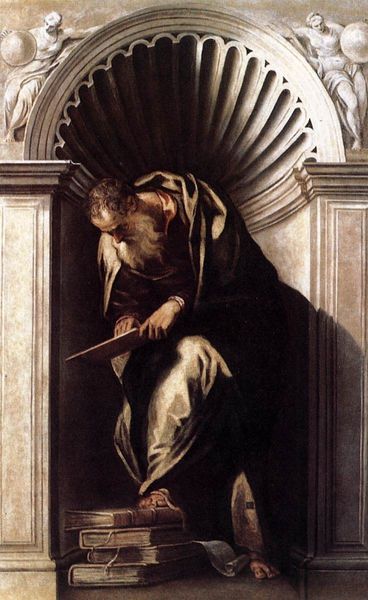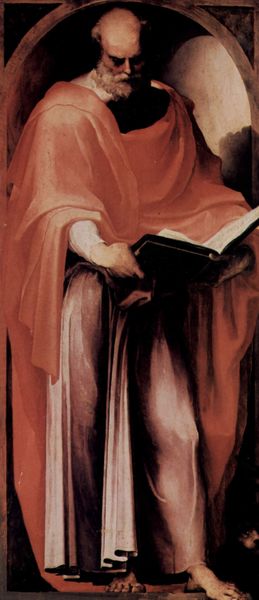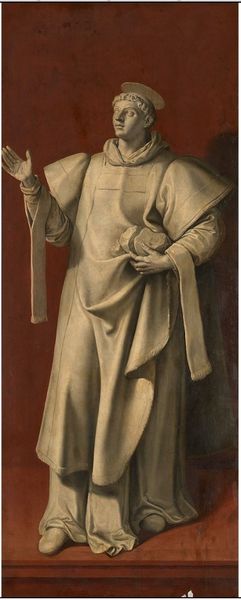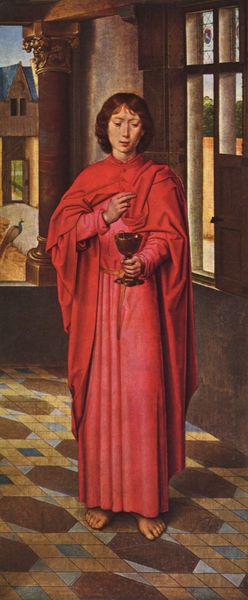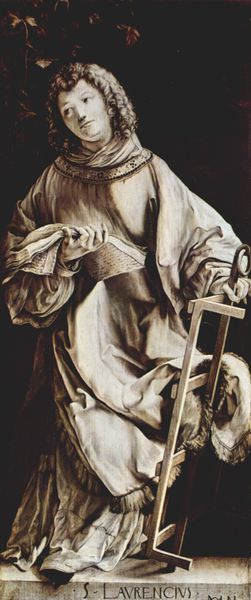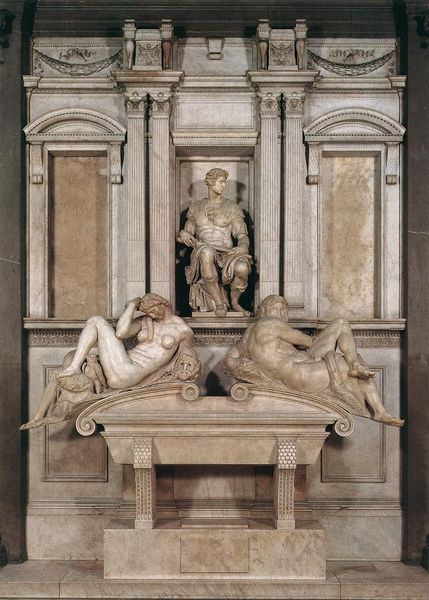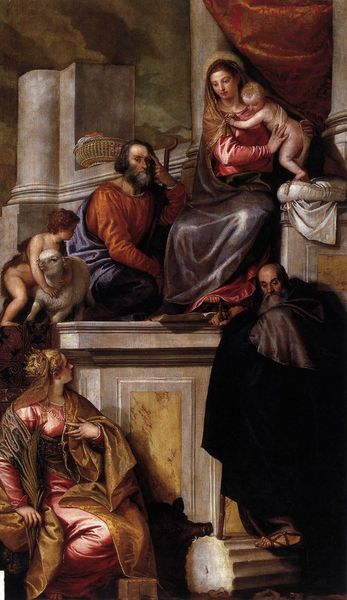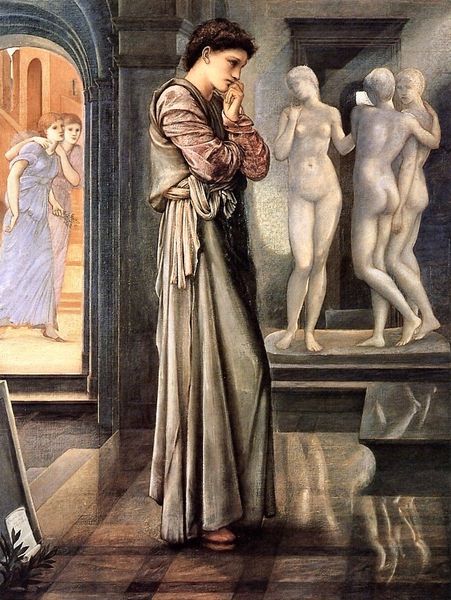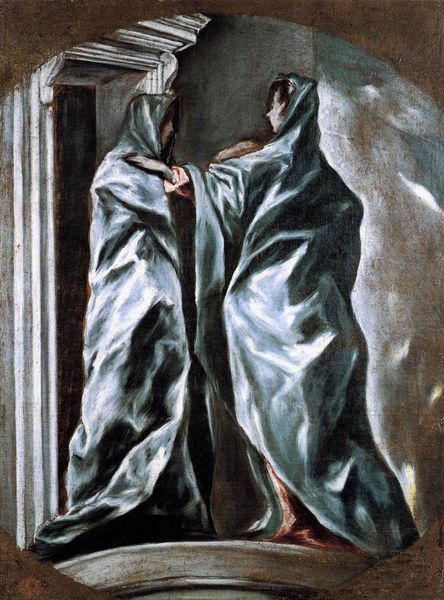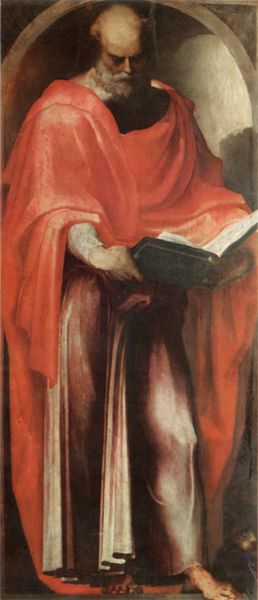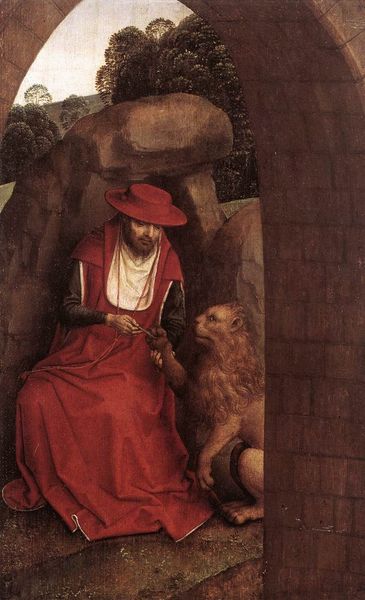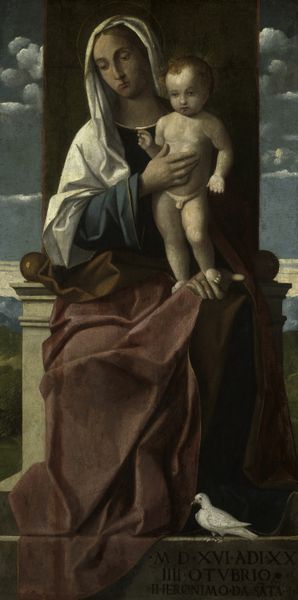
painting, oil-paint
#
portrait
#
painting
#
oil-paint
#
sculpture
#
figuration
#
11_renaissance
#
famous-people
#
history-painting
#
italian-renaissance
Copyright: Public domain
Curator: What strikes me first is the somber, almost internalized drama of this figure. There's a weight here, a sense of burdened intellect. Editor: I agree. Let's delve into that. What we're looking at is Paolo Veronese's "Plato," painted around 1560. It’s an oil on canvas, currently housed at the Biblioteca Marciana in Venice. He's rendered not just as a philosopher, but as a man wrestling with thought itself. Curator: The subdued color palette contributes significantly to that mood. That single color in gradients. But more than that it conveys his world as limited to his single point of view as he struggles with new ways of thinking. It reflects the intellectual isolation often experienced by those challenging existing paradigms. The red, as his soul. The heavy robes, a metaphor for the burdens of knowledge? Editor: Intriguing. I see that echoed in the upward gaze – perhaps searching for answers beyond the immediate earthly realm. Plato's placement beneath the sculptures suggests an embodiment of classical ideals and, culturally, underscores a connection between the wisdom of antiquity and the Renaissance pursuit of knowledge. The hand gesture strikes me—protective, almost self-defensive. As though guarding his ideals? Curator: Or perhaps protecting himself from the consequences of his radical ideas. Think of the sociopolitical implications of questioning established norms in that era. Consider the power structures Plato’s philosophy might have challenged, the risks inherent in disseminating such views. This piece embodies the tension between intellectual pursuit and social constraint, so prevalent even now. I wonder what that gaze sees in our own era, with all that we know now? Editor: His portrayal certainly isn't idealized; we see age, worry etched in his features. It’s humanizing. The architectural details frame Plato not just as a figure, but almost as an integral piece of the architecture—linking him to the enduring influence of philosophy. As a kind of structural ideal itself. And how different is that red garment than the flowing red paint that Rothko would use some four centuries later? Curator: It underscores the enduring relevance of his philosophy and how it continues to underpin Western thought to this day, even through the enlightenment. This is how visual symbol makes way into our present understanding. Editor: Precisely. Thinking about how an icon changes meaning is quite the thing to wonder about in front of it! Curator: Definitely a work that invites endless reinterpretation and connects our present to history, thought and time. Editor: Indeed! Each encounter brings a fresh lens, another reflection in the timeless mirror of Plato's mind.
Comments
No comments
Be the first to comment and join the conversation on the ultimate creative platform.
